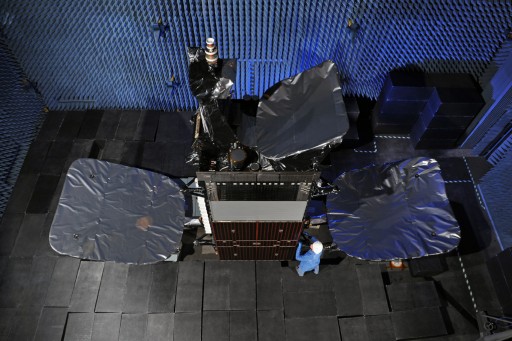Intelsat 23

Intelsat 23 is a commercial Communications Satellite that will be operated by Intelsat, Luxembourg. The prime contractor for the satellite is Orbital Sciences, USA.
Intelsat 23 is based on Orbital’s flight-proven GeoStar-2 Satellite Bus featuring a powerful 4.8-kilowatt payload. The vehicle has a launch mass of 2,730 Kilograms and is outfitted with two deployable Gallium-Arsenide solar arrays and on-board batteries for power generation. Intelsat 23 features a communications payload consisting of 24 C-Band Transponders and 15 Ku-Band Transponders.
The C-Band System features a 2.5 by 2.7-meter single shell super-elliptical deployable reflector as well as a 1.3 by 1.65-meter deck-mounted reflector. The Ku-Band System features a 2.5 by 2.7-meter deployable reflector. The vehicle is three-axis stabilized with a zero-momentum system. Intelsat 23’s reaction control system is a monopropellant hydrazine system.
The Main Propulsion System features an IHI BT-4 Main Engine. BT-4 was developed by IHI Aerospace, Japan and has a dry mass of 4 kilograms and a length of 0.65 meters. The engine provides 450 Newtons of Thrust and uses Hydrazine and mixed Oxides of Nitrogen as propellants. Intelsat 23 has a life expectancy of 15 years. The satellite will replace the Intelsat 707 spacecraft at a position of 307° East Longitude in Geostationary Orbit providing coverage of the Americas, the Caribbean, Western Europe and selected islands in the Pacific and Atlantic Oceans. “Intelsat 23 will refresh satellite capacity across four continents, offering critical services to the world’s leading communications providers,” said Intelsat CEO David McGlade. “This launch continues our current fleet replacement and expansion campaign, which is scheduled for completion in early 2013.”
